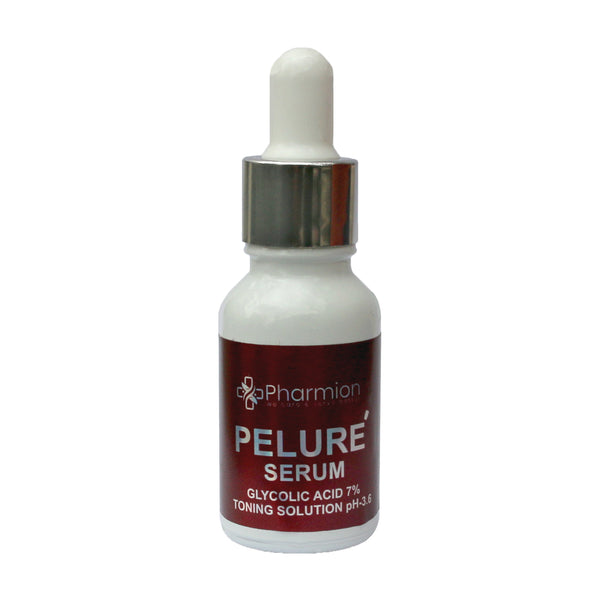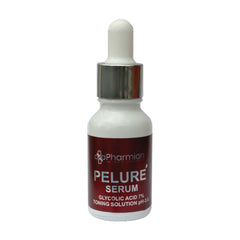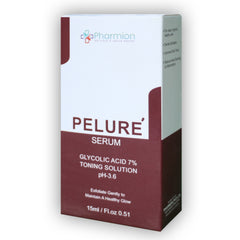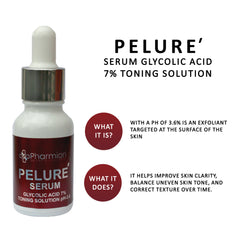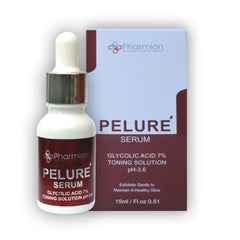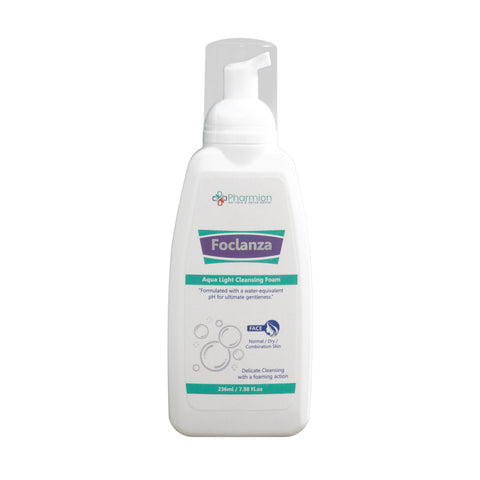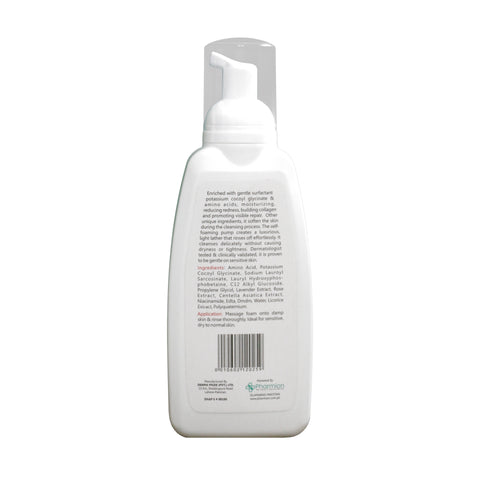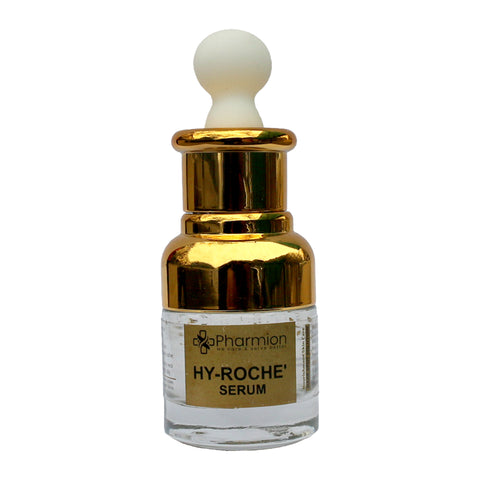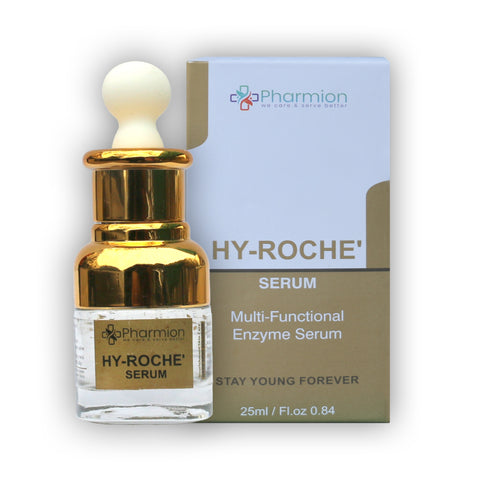PELURE’ 15ml
PELURE’ Serum Glycolic Acid 7% Toning Solution with a PH of 3.6% is an exfoliant targeted at the surface of the skin. It helps improve skin clarity, balance uneven skin tone, and correct texture over time.
Why Glycolic Acid Serum?
Glycolic Serum is an AHA or Alpha Hydroxy Acid. It’s a water-soluble acid, therefore, increases the luminosity of the skin because it exfoliates the outermost dead layer of the skin. It improves the reflection of light on the skin. Additionally, using Glycolic acid in the right percentage and when done appropriately, it’s a much gentler way to exfoliate the skin.
How does It work?
First and foremost, glycolic acid is an exfoliant. It helps shed dead skin cells and reveal the newer, brighter layers underneath by acting on the stratum corneum (the outermost layer of skin). Stimulating collagen production, helps skin feel firmer and minimizes fine lines and wrinkles.
Amazing Facts About PELURE’ Serum
- Using glycolic acid in your exfoliation routine helps to keep your skin’s pH level balanced. In addition, it will fade any lingering acne scars and unclog your pores.
- It has the ability to deeply penetrate the epidermis layer of your skin to stimulate cellular activity.
- It will help to remove the uppermost layer of our skin by breaking down the bonds that bind dead cells together.
- Moreover, for those who suffer from outbreaks, it’s particularly effective. Thus, it fights against a whole range of skin irritation and acne issues.
-
Application: Before applying wash your face, when it's completely dry then apply serum. It's highly recommended that after 20-30 minutes, apply any moisturizer for better results.Don't wash your face for 5-6 hours. It's recommended to apply in day time & once a day.For the first 6 weeks apply this serum thrice in a week. After 6 weeks, use moisturizer after 10 minutes of it's application.
-
INGREDIENTS:
Aqua (Water), Glycolic Acid, Rosa damascena flower water, Centaurea cyanus flower water, Aloe Barbadensis Leaf Water. Propanediol, Glycerin, Triethanolamine. Aminomethyl Propanol, Panax Ginseng Root Extract, Tasmannia Lanceolata Fruit/Leaf Extract, Aspartic Acid, Alanine, Glycine, Serine, Valine, Isoleucine, Proline, Threonine, Histidine, Phenylalanine, Glutamic Acid, Arginine, PCA, Sodium PCA, Sodium Lactate, Fructose, Glucose, Sucrose, Urea, Hexyl Nicotinate, Dextrin, Citric Acid, Polysorbate 20, Gellan Gum, Trisodium Ethylenediamine Disuccinate, Sodium Chloride, Hexylene Glycol, Potassium Sorbate, Sodium Benzoate, 1,2- Hexanediol, Caprylyl Glycol.
Major Ingredients and their functionality:
Rosa damascena flower water
Rosa Damascena is a staple ingredient in many natural rose water products; it has antibacterial, antimicrobial, and anti-inflammatory properties, thus helping soothe skin, minimize pores, and reduce fine lines, to help you get the healthy skin of your dreams.
Tasmania Lanceolata Fruit/Leaf Extract
A 2020 clinical study claimed a 2% concentration of Tasmania lanceolata extract can help with stretch marks by decreasing skin roughness and improving firmness. Suppliers of this ingredient also claim it can help alleviate the sensation of itch and reduce redness.
Centaura Cyanus Flower Water
What is Centaura Cyanus Flower Water? More commonly known as cornflower this herb has gained a reputation for benefiting a lot of occurring eye care concerns, such as swollen, irritated and tired eyes. Its soothing effects can also relieve any minor cutaneous irritations by helping the skin to regenerate itself.
Aloe Barbadensis Leaf Water
Aloe barbaensis leaf juice is a great moisturizer, and anti-bacterial and has many anti-inflammatory properties making it a potent ingredient for healing wounds, reducing any signs of sunburn, and helping dehydrated skin to lock in moisture
Propanediol
Propanediol has emollient properties. It prevents your skin from damage by reducing water loss. This helps you get softer and smoother skin. The ingredient is a boon for people with dry skin.
Glycerin
Glycerin benefits the skin barrier by pulling water from the air to keep the skin hydrated and minimize water loss. Glycerin can remain in the skin for a while, which helps the skin retain moisture even when exposed to damaging environmental aggressors like pollution.
Triethanolamine (TEA)
Triethanolamine (TEA) is a non-active ingredient that does not have any effect on the skin but is only used to balance the pH of formulations and stabilize them. This ingredient improves the feel of the product and the way that it interacts with the skin.
Arginine
Arginine is a non-essential amino acid the body is producing on its own. Amino acids are vital for the skin. Not just for hydration, they also protect the skin from free radical damage and premature skin aging. Arginine has soothing properties and helps to repair visible skin damage.
Sodium PCA
Acts as a humectant to trap water in the skin: Like hyaluronic acid and glycerin, "it increases the water content in the top of layers of the skin by drawing moisture from the surrounding air. A PCA peel is a specific brand of chemical peel that's manufactured by the company PCA Skin. These exfoliating solutions are customized for different skin types and incorporate a variety of ingredients.
Sodium Lactate
Sodium Lactate is a multifunctional ingredient commonly used in cosmetics and skin care products. As a natural component of the skin, it helps maintain adequate skin hydration as part of the Natural Moisturizing Factor (NMF). In skin care products, Sodium Lactate is typically used as: Humectant and moisturizer.
Fructose, Sucrose, Glucose
Fructose is just a fancy word for the fruit sugars that are often found in fruit and honey. Formulated into personal care products because of its ability for water-binding properties which helps the skin remain hydrated and moisturized in the same way as other well-known humectants do. Sucrose, much like glucose and fructose are natural sugar with some levels of glycolic acid in the sugar this ingredient not only exfoliates the skin of dead skin cell build-up but also restores balance to the skin oils
Urea
Urea helps improve the appearance of patches of dry, rough, scaly skin in two ways: by providing hydration to smooth your skin's texture, and by helping to reduce the buildup of dead skin cells.
Hexyl Nicotinate
An amino acid/sugar complex that is the organic compound of nicotinic acid (vitamin B3, niacin). It penetrates the skin even better than niacin (B3) and is used in skin care to improve blood circulation, regenerate tired and puffy skin, and increase the skin's natural defenses against irritants.
Dextrin
Dextrin functions by increasing the solubility of water-insoluble compounds. In doing so, personal care products, such as lotions and creams, as well as cosmetic formulas, are able to achieve a more stable, smooth, and uniform texture.
Citric Acid
Citric Acid works by exfoliating the upper layer of dead skin cells to help clean pores, even skin tone and soften and smooth the skin. AHAs can also be used as pH adjusters. pH adjusters are ingredients added to products to ensure they are mild and non-irritating – not too acidic (low pH) or too basic (high pH)
Polysorbate 20
Polysorbates for skin function as emulsifiers and have mild surfactant properties; some polysorbates are derived from the food ingredient sorbitol, which occurs naturally in many fruits, while others have a fatty acid component.
Gellan Gum
Gellan gum is widely used in shampoos, body washes, sprayable sunscreens, etc. Gellan gum acts as an emulsion stabilizer by preventing the separation of oil and water. In cosmetic formulations, gellan gum acts as a suspending agent by stabilizing the emulsion and keeping it uniform against temperature fluctuations.
Trisodium ethylenediamine Disuccinate
Trisodium ethylenediamine disuccinate is a chelating agent which is used in skin care/cosmetic formulations to bind with metal ions or metallic compounds, thereby preventing them from adhering to a surface (such as skin or hair) or causing contamination (as in the case of trace amounts of iron).
Sodium Chloride
It is used primarily as a binding and/or thickening agent in skin and hair care products (notably shampoos) and occasionally as an abrasive in salt scrub products.
Hexylene Glycol
Hexylene glycol is famous for its excellent solvency among a wide variety of materials and is popular in skin care formulas due to its ability to improve texture. It has viscosity-reducing properties that allow it to thin out heavy, thick formulations and produce smooth spread ability.
Potassium Sorbate
Potassium Sorbate is a mild preservative, it has antibacterial and antifungal properties that ensure your skincare and cosmetic products are shelf-stable and remain hygienic for use in your daily routine
Sodium Benzoate
Sodium benzoate is used in a wide variety of cosmetics and personal care products where it acts as a corrosion inhibitor, fragrance ingredient, and preservative. As a preservative, sodium benzoate is primarily an anti-fungal agent but also has some effectiveness against bacteria.
1,2-Hexanediol
1,2-Hexanediol is a colorless liquid with hygroscopic nature. It is ideal for use as an emollient, humectant, and wetting agent in cosmetic and skin care products.
Caprylyl Glycol
Caprylyl glycol is a humectant agent, notes Ciraldo. That means it hydrates your complexion by attracting—and retaining—water. It also has conditioning properties, so it softens the skin and hair. For this reason, caprylyl glycol is commonly added to moisturizing products like hair conditioners and eye creams.

